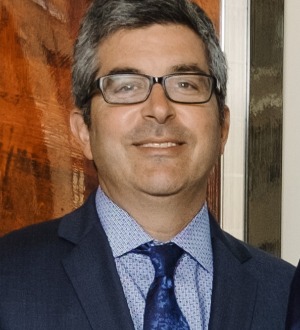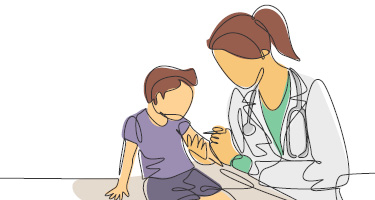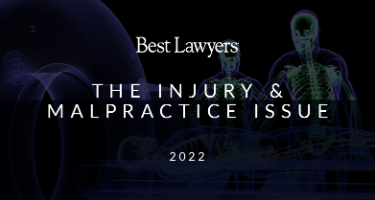Misdiagnosis and missed diagnosis sound like the same thing. The two do share some key similarities. Both can lead to the needless pain and suffering of a patient. Also, both can lay the foundation for a medical malpractice lawsuit. When there is a missed diagnosis, the doctor gives the patient a clean bill of health when, in actuality, the patient is suffering from a disease or other medical condition. With a misdiagnosis situation, the doctor does in fact provide the patient with a diagnosis, but it is the wrong diagnosis. If a patient suffered as a direct result of a missed diagnosis or a misdiagnosis, they may have grounds for a medical malpractice case. Bringing a medical malpractice lawsuit can often feel like an uphill struggle. It is a complicated area of law and one rife with potential pitfalls. An attorney looking to take on a medical malpractice case must be fully aware of the difficulties that lie ahead and the amount of resources it may take to be successful.
The Difficulties in Proving Your Medical Malpractice Case
A missed diagnosis or a misdiagnosis can have catastrophic consequences for a patient. A missed diagnosis or misdiagnosis alone, however, is not enough to successfully bring a medical malpractice case. A patient must prove three important things in order to succeed in a medical malpractice case. These three things include:
- A doctor-patient relationship existed;
- The doctor was negligent; and
- The doctor’s negligence caused injury to the patient.
Negligence generally comes down to whether the doctor deviated from the standard of care in evaluating the patient and arriving at a diagnosis. Medical malpractice cases involving an error in diagnosis is based on a standard set by comparing how another doctor in a similar medical specialty, under similar circumstances should have diagnosed the patient. In other words, in order to prove medical negligence, the patient must be able to show that the doctor failed to provide treatment with a level of skill and competency comparable to other professionals in the same or similar medical field.
To show negligence in a case of misdiagnosis or missed diagnosis, it is critical to understand the methodology the doctor employed in arriving at or failing to arrive at a diagnosis. Doctors use the differential diagnosis method to determine the condition of a patient. The doctor will take the patient’s history, including the patient’s complaints and symptoms, as well as a medical history. Based on that information, the doctor should perform a directed physical examination, which should lead the doctor to a list of all possible causes, ranked in order of which is most likely the case. The doctor will then perform appropriate tests and further evaluations to narrow down that list. The follow-up may include:
- Asking more questions about symptoms
- Performing further laboratory or radiological testing
- Investigating the patient’s medical history
- Referrals to specialists
In some cases, there may have been an error in one of the diagnostic tests. Whether the problem was caused due to faulty medical equipment or human error will need to be determined. Depending on the cause of the diagnostic error, the doctor may not be liable for medical malpractice. In these kinds of cases, a lab technician or other party may be responsible.
To prove that the doctor was negligent with regard to arriving at a correct diagnosis, the patient will need to show that either:
- The doctor did not perform the differential diagnosis properly, which resulted in the missed or misdiagnosis; or
- The doctor did not include all of the appropriate possibilities in the differential diagnosis list that a reasonably prudent physician should have considered under similar circumstances; or
- The doctor failed to perform proper testing to rule in or rule out these possibilities and arrive at a definitive diagnosis.
Generally speaking, an expert witness will need to be called in to evaluate how the doctor employed the differential diagnosis method and whether the requisite standard of care was met.
If the patient is able to prove that the doctor was negligent, causation will still need to be addressed. Causation is another necessary, but potentially problematic, element of medical malpractice cases. It is not enough that an error in diagnosis occurred. The misdiagnosis or missed diagnosis must have directly caused harm to the patient and that, had he or she been properly diagnosed, the harm would have never occurred. Harm caused by misdiagnosis or missed diagnosis usually is due to the fact that the incorrect diagnosis led to the wrong type of medical treatment, or an absence of any treatment thus allowing the patient’s condition to get worse. The error in medical treatment may have led the patient to needlessly suffer continuing pain or it may even have caused further medical issues beyond the patient’s initial problems.
Causation can be one of the largest obstacles to overcome in a medical malpractice case. The patient must show that the suffering they endured was not just because he or she suffered from a medical condition, but that it was a direct result of the doctor’s error. The patient must show that he or she suffered in a way that would not have happened had a proper diagnosis been made. With someone already suffering a medical condition, it is necessary to show that pain was caused or exacerbated by an improper diagnosis rather than the condition itself just running its course.
Why Lawyers Don’t Take Medical Malpractice Cases
Many lawyers choose not to handle medical malpractice cases. Proof of medical malpractice can be very difficult to come by. There may be clear injuries, but then you still have to show that the injuries were a direct result of negligence. Proving causation is just one obstacle that stops attorneys from taking on medical malpractice claims. Even lawyers who choose to take on these types of cases tend to be extremely selective. This is so because medical malpractice cases are not only complicated, but require many resources in which most lawyers are not willing or able to invest. The professional liability insurers for medical professionals are prepared to defend malpractice cases with everything they have.
Not only can medical malpractice cases be intimidating to most lawyers, but they are very expensive. There are substantial upfront costs that need to be put forward to even begin investigating a potential medical malpractice case. Qualified medical experts are necessary to analyze and investigate medical records. There will be mountains of medical records and paperwork to sift through and the attorney will need to have a strong understanding of the medicine involved.
While taking on a medical malpractice case may be daunting, seeing positive results and changing the life of a client is within reach to those attorneys who have the right resources and knowledge base. The reward in successfully bringing this type of claim is helping the client achieve justice and a secure future.
-----------------------
Robert Marino became a lawyer because he wanted to give a voice to the voiceless. He does just that by focusing his practice on cases where people need help standing up to those who have injured them and he helps his clients protect their recoveries and benefits. His passion for the law extends to his role as an adjunct professor of law, where, for more than 15 years, he has been teaching future generations of lawyers. Rob’s practice areas include personal injury, labor law, trusts & estates, business law, medical malpractice, appellate law, and surrogate’s court.

































